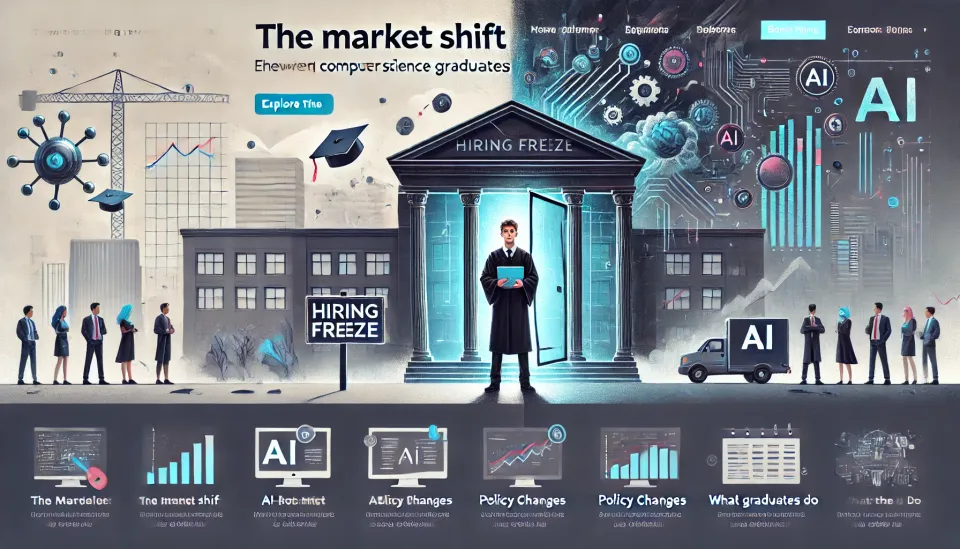Vanishing Jobs in a New Era

Just a few years ago, a freshly printed college degree—especially in computer science—was almost a golden ticket to a good-paying job in tech. Today, that ticket doesn’t guarantee entry. In fact, for many new graduates, the door is quietly closing.
The job market is shifting—and fast. While Friday’s employment report may show steady headline numbers—125,000 jobs added, unemployment still historically low at 4.2%—the real story is playing out beneath the surface, and it’s shaking the foundation for a generation of new workers.
The culprits? Two major forces: artificial intelligence and trade policy.
Let’s start with AI
Across the technology sector, companies are no longer hiring at the pace they once did. Entry-level roles that once absorbed young talent by the thousands are now vanishing, often replaced by machine learning models and automation tools. A recent report by Oxford Economics found that since 2022, IT employment among workers aged 22 to 27 has dropped 8%. That’s not a hiring slowdown—that’s a contraction.
Companies like Microsoft now report that AI writes nearly one-third of their code. Google, Salesforce, and others are laying off employees in roles like data entry and customer service—positions AI can now do faster and cheaper.
At the same time, these firms are increasingly looking for AI specialists, data architects, and machine learning coaches—not generalists fresh out of college. The message to students is clear: specialize or get left behind.
But AI isn’t acting alone
Trade tensions and new tariffs are adding fresh uncertainty to the economic landscape. President Trump’s tariff policies are expected to reignite inflation and weigh on consumer spending. This uncertainty is making companies even more cautious—cutting costs, freezing hiring, and leaning harder on automation.
According to Oxford Economics, 12% of the recent rise in unemployment—from 3.6% to 4.2%—is due to job losses among recent college grads. That’s a dramatic reversal. For decades, young graduates had lower unemployment than the national average. Today, their rate stands at 5.8%—a full percentage point higher than the general population.
It’s not just tech companies either. Broader job openings in professional and business services—a sector that includes many tech-adjacent roles—have dropped by as much as 1.5 million in the last two years.
This is a pivotal moment
Traditionally, technological revolutions destroy some jobs but create new ones. Over time, productivity rises, industries adapt, and opportunities reappear. But AI is different. The speed of change is unprecedented. By 2030, McKinsey projects up to 30% of all work hours in the U.S. could be automated. That's not the distant future. That's five years from now.
So what does this mean?
It means students must adapt fast. Employers are hiring fewer, but they’re demanding more. Skills in data science, AI training, and systems architecture are the new ticket in. Generalists may struggle.
It means business must look ahead—not just at unemployment numbers, but at structural shifts beneath them.
And it means we all must rethink what work, learning, and opportunity will look like in the age of AI.
Because ready or not—the job market of tomorrow is already here - Agentic Workforce.
